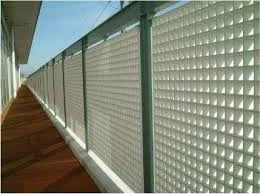
-
 Afrikaans
Afrikaans -
 Albanian
Albanian -
 Amharic
Amharic -
 Arabic
Arabic -
 Armenian
Armenian -
 Azerbaijani
Azerbaijani -
 Basque
Basque -
 Belarusian
Belarusian -
 Bengali
Bengali -
 Bosnian
Bosnian -
 Bulgarian
Bulgarian -
 Catalan
Catalan -
 Cebuano
Cebuano -
 China
China -
 China (Taiwan)
China (Taiwan) -
 Corsican
Corsican -
 Croatian
Croatian -
 Czech
Czech -
 Danish
Danish -
 Dutch
Dutch -
 English
English -
 Esperanto
Esperanto -
 Estonian
Estonian -
 Finnish
Finnish -
 French
French -
 Frisian
Frisian -
 Galician
Galician -
 Georgian
Georgian -
 German
German -
 Greek
Greek -
 Gujarati
Gujarati -
 Haitian Creole
Haitian Creole -
 hausa
hausa -
 hawaiian
hawaiian -
 Hebrew
Hebrew -
 Hindi
Hindi -
 Miao
Miao -
 Hungarian
Hungarian -
 Icelandic
Icelandic -
 igbo
igbo -
 Indonesian
Indonesian -
 irish
irish -
 Italian
Italian -
 Japanese
Japanese -
 Javanese
Javanese -
 Kannada
Kannada -
 kazakh
kazakh -
 Khmer
Khmer -
 Rwandese
Rwandese -
 Korean
Korean -
 Kurdish
Kurdish -
 Kyrgyz
Kyrgyz -
 Lao
Lao -
 Latin
Latin -
 Latvian
Latvian -
 Lithuanian
Lithuanian -
 Luxembourgish
Luxembourgish -
 Macedonian
Macedonian -
 Malgashi
Malgashi -
 Malay
Malay -
 Malayalam
Malayalam -
 Maltese
Maltese -
 Maori
Maori -
 Marathi
Marathi -
 Mongolian
Mongolian -
 Myanmar
Myanmar -
 Nepali
Nepali -
 Norwegian
Norwegian -
 Norwegian
Norwegian -
 Occitan
Occitan -
 Pashto
Pashto -
 Persian
Persian -
 Polish
Polish -
 Portuguese
Portuguese -
 Punjabi
Punjabi -
 Romanian
Romanian -
 Russian
Russian -
 Samoan
Samoan -
 Scottish Gaelic
Scottish Gaelic -
 Serbian
Serbian -
 Sesotho
Sesotho -
 Shona
Shona -
 Sindhi
Sindhi -
 Sinhala
Sinhala -
 Slovak
Slovak -
 Slovenian
Slovenian -
 Somali
Somali -
 Spanish
Spanish -
 Sundanese
Sundanese -
 Swahili
Swahili -
 Swedish
Swedish -
 Tagalog
Tagalog -
 Tajik
Tajik -
 Tamil
Tamil -
 Tatar
Tatar -
 Telugu
Telugu -
 Thai
Thai -
 Turkish
Turkish -
 Turkmen
Turkmen -
 Ukrainian
Ukrainian -
 Urdu
Urdu -
 Uighur
Uighur -
 Uzbek
Uzbek -
 Vietnamese
Vietnamese -
 Welsh
Welsh -
 Bantu
Bantu -
 Yiddish
Yiddish -
 Yoruba
Yoruba -
 Zulu
Zulu
fiberglass car
The Future of Fiberglass Cars Innovation in Automotive Design
In the ever-evolving sphere of automotive engineering, fiberglass has emerged as a compelling material, promising advancements in both performance and design. This article delves into the characteristics, applications, and future of fiberglass cars, highlighting why this material is gaining traction in the industry.
Understanding Fiberglass
Fiberglass, a composite material made from fine glass fibers and epoxy resin, offers an impressive strength-to-weight ratio. This characteristic is crucial in the automotive world, where reducing weight can lead to significant improvements in fuel efficiency, speed, and handling. Additionally, fiberglass is highly malleable, allowing engineers and designers to create complex shapes that would be difficult or impossible with traditional materials like steel or aluminum.
Advantages of Fiberglass in Automotive Design
One of the primary benefits of using fiberglass in car manufacturing is its cost-effectiveness. Compared to metals, fiberglass can be molded into intricate designs without the need for welding or extensive machining, reducing production costs. Moreover, fiberglass is resistant to rust and corrosion, extending the lifespan of the vehicle and decreasing maintenance costs for owners.
Another advantage is the versatility of fiberglass. It can be used for various components, including body panels, insulation, and even structural elements, allowing for a cohesive design approach. The ability to produce parts with different colors and finishes directly from the mold also reduces the need for additional painting or finishing processes, further economizing production.
Applications in the Automotive Industry
fiberglass car

Historically, fiberglass primarily found its niche in sports and recreational vehicles, such as the classic Chevrolet Corvette and various models of the Lotus. These cars leveraged fiberglass's lightweight properties to enhance performance on the track. However, recent innovations have brought fiberglass into the mainstream automotive market.
Today, many manufacturers are experimenting with fiberglass in electric vehicles (EVs) and hybrids, where weight reduction is paramount for maximizing battery efficiency. For instance, companies are utilizing fiberglass for battery enclosures and body panels to enhance the overall performance of these environmentally friendly vehicles.
Challenges and Innovations
Despite its many benefits, the use of fiberglass in automotive production is not without challenges. Concerns about the environmental impact of fiberglass production and disposal have prompted manufacturers to explore more sustainable practices. Innovations such as bio-based resins and recyclable fiberglass composites are being researched, aiming to mitigate these environmental issues.
Moreover, as the automotive industry shifts towards autonomous and connected vehicles, the need for advanced materials like fiberglass may increase. The customizable nature of fiberglass allows for the integration of sensors and electronics into the vehicle's body without compromising the vehicle's aesthetic appeal.
The Road Ahead
As we look towards the future, fiberglass cars represent a promising area of innovation in automotive design. With ongoing advancements in material science and engineering technologies, the potential for creating lighter, more efficient, and aesthetically pleasing vehicles is vast. Manufacturers will likely continue to explore the integration of fiberglass in various applications, not just limited to performance vehicles but also in mass-market models.
In conclusion, fiberglass cars embody a marriage of tradition and innovation in the automotive industry. Their lightweight nature, cost-effectiveness, and design versatility present a compelling case for their adoption in future vehicle manufacturing. As sustainability becomes a critically important factor in production, the automotive world may find that fiberglass is not just a viable alternative but a pivotal player in shaping the future of transportation.









